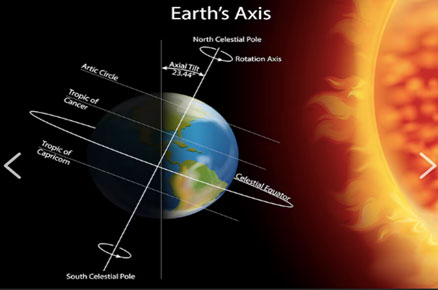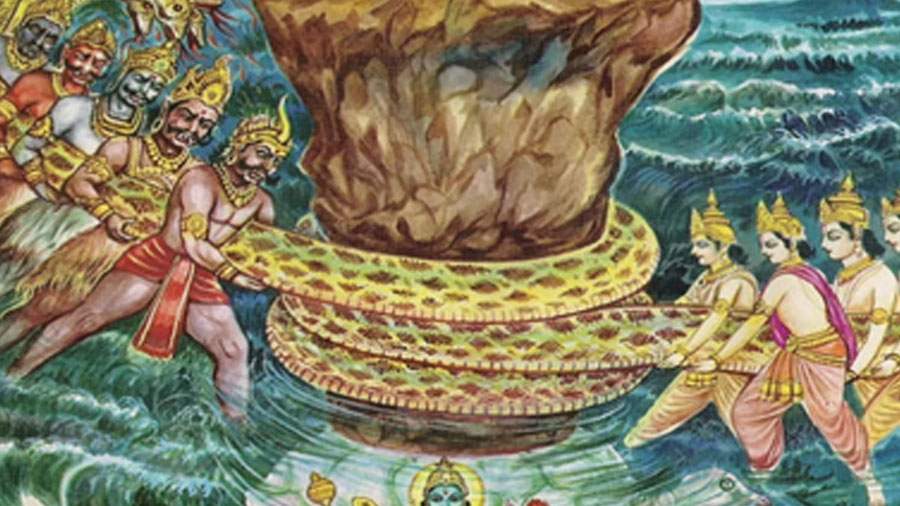The traditional representation of Samudra Mantana or the churning of the ocean in Kurmavatara represents the struggle between opposing forces seeking equilibrium.
Interpreting the Samudra Mantana as a metaphor for the cyclic nature of celestial movements, including Earth’s axial tilt, provides a fascinating perspective on how ancient myths encapsulate profound cosmic truths.
The Earth’s axial tilt is believed to have happened during its formation, around 4.5 billion years ago. The exact cause is still debated among scientists. The tilting of the Earth on its axis to about 23.5 degrees is responsible for the changing of seasons.

When the hemisphere is tilted towards the sun, we experience summer. The Sun starts its northward journey from the Tropic of Capricorn, which is usually in January and is called Uttarayana Punya kala in the Hindu calendar.
Likewise, when the hemisphere is tilted away from the sun, we experience cooler temperatures. The Sun starts its southward journey from the Tropic of Capricorn typically around July and is called Dakshinayana punya kala in the Hindu calendar.

In the Mahabharata, Uttarayana punya kala holds significance, particularly during the events surrounding Bhishmacharya’s death. Mahabharata was compiled between 300 BCE and 300 CE.
Samudra Mantana in Kurmavatara underscores the interconnectedness of the Puranas and scientific understanding. Revelations within the Puranas invites us to research on the deeper meanings embedded in these timeless narratives.

